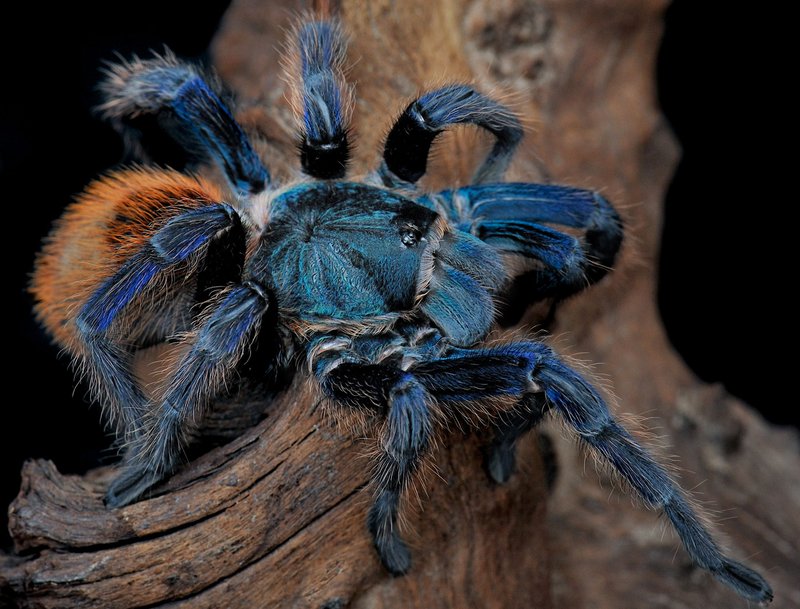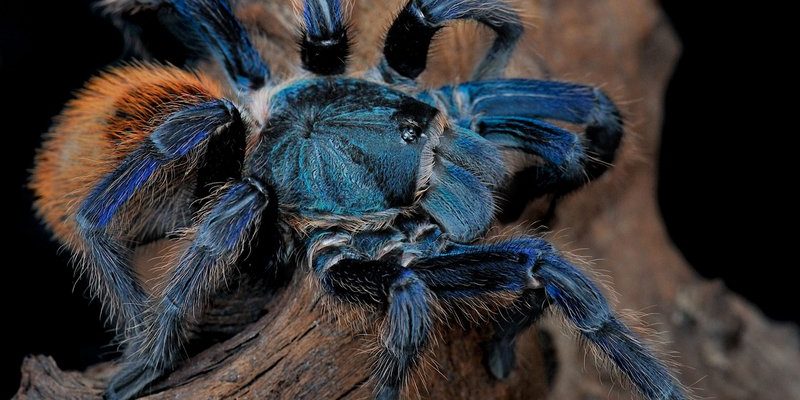
Let’s dive into the world of the cobalt blue tarantula. Imagine you’re sitting with a friend who’s curious about these fascinating arachnids. It’s like having a good coffee chat where we unravel the myths and facts about their behavior, potential for aggression, and, most importantly, how dangerous they really are. So, grab your favorite mug, and let’s explore this together!
What is the Cobalt Blue Tarantula?
The cobalt blue tarantula, scientifically known as *Haplopelma lividum*, is a striking species native to Southeast Asia. They are particularly found in countries like Myanmar and Thailand. With their vibrant blue legs and a robust body, they are often regarded as one of the most beautiful tarantulas in the world. But beauty isn’t everything when it comes to understanding their nature.
These tarantulas are burrowing spiders, meaning they usually live underground in complex tunnel systems. Think of them as the introverts of the spider world, preferring the comfort of their cozy homes rather than being out in the open. Their color can vary, especially in younger spiders, where they may appear more greenish until they mature into that stunning cobalt blue we all admire.
Are Cobalt Blue Tarantulas Dangerous?
When it comes to danger, the cobalt blue tarantula is not considered deadly to humans. Their venom is potent, sure, but it’s not life-threatening. Here’s the thing: their bite can be painful and could cause symptoms like swelling and irritation, but it won’t send you to the hospital. Think of it like a bee sting—unpleasant but not fatal for most.
However, just because they aren’t deadly doesn’t mean they should be underestimated. If provoked, they can bite, and that bite can hurt. The best approach? Always treat these spiders with respect. Avoid handling them unless you’re experienced, and always create a safe environment for both you and the spider.
Are They Aggressive Creatures?
You might be wondering if cobalt blue tarantulas are aggressive. The answer isn’t straightforward. In general, these spiders are more defensive than aggressive. They prefer to avoid confrontation and will often retreat into their burrows if they feel threatened. However, if you corner them or invade their space, they can become defensive.
Here’s a fun analogy: think of them like a cat. A cat may not seek out a fight, but if you get too close to its territory, it might swat at you. Similarly, cobalt blue tarantulas will show aggression mainly when they feel their home or safety is threatened.
Handling and Care of Cobalt Blue Tarantulas
If you’re considering keeping a cobalt blue tarantula as a pet, it’s crucial to understand their care needs. First, you’ll need to create an environment that mimics their natural habitat. They thrive in warm, humid conditions, so humidity levels of around 70-80% are ideal. You might want to include a substrate they can burrow into, like coconut fiber or peat moss.
When it comes to handling, it’s generally not recommended unless you’re experienced. If you need to move them, use a soft brush or coax them gently into a container. Always remember that a frightened tarantula can be unpredictable.
Behavioral Traits to Know
Understanding the behavior of cobalt blue tarantulas can help you appreciate them better. They are known for their speed and agility. Unlike some tarantulas that move slowly, these spiders can dart quickly if they feel threatened. It’s one reason why many enthusiasts admire their beauty from a distance. Their quick movements might surprise someone not familiar with them.
While they’re not usually aggressive, they are territorial. It’s vital to keep them alone in their enclosure, as housing them with another spider can lead to fights, resulting in injury or even death.
Comparing Cobalt Blue Tarantulas to Other Species
It’s interesting to compare cobalt blue tarantulas with other popular pet tarantulas, like the Chilean rose or the Mexican red knee. For example, the Chilean rose is known for its laid-back personality, making it a favorite among beginners. In contrast, cobalt blue tarantulas are better suited for more experienced keepers who understand their defensive behaviors.
If you’re looking for a spider that is more docile, consider these alternatives. However, if a stunning, vibrant spider excites you and you’re willing to learn about its needs, the cobalt blue tarantula might be the right fit.
Final Thoughts on Cobalt Blue Tarantulas
In summary, the cobalt blue tarantula is not inherently dangerous or aggressive, but they do have their quirks. They are beautiful, fascinating creatures that require proper care and respect. While they can deliver a painful bite if threatened, they typically prefer to retreat rather than confront.
If you’re intrigued by these vibrant spiders, just remember to approach them with care and knowledge. Whether you’re admiring them in a terrarium or getting to know them as a pet, understanding their behavior will help you appreciate the cobalt blue tarantula even more. After all, in the world of exotic pets, knowledge is key to a rewarding experience.

